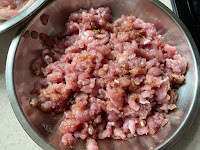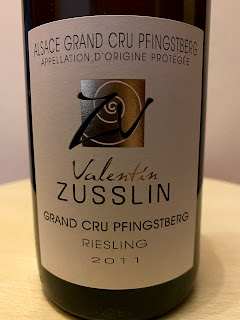This 16-hectare wine estate is located in Orschwihr, halfway between Colmar and Mulhouse. With 13th generation successively working at the winery to produce high quality wines, showcasing the slopes of the Bollenberg, Clos Liebenberg (monopole of the family), and the Grand Cru Pfingstberg.
In 1691, after the 30 Years War Jodocus Cisle, a Swiss winemaker and founder of the Zusslin family, settled in Orschwihr with Barbara Vogel, a young Alastian lady. Many years gone by and after World War II, M. Valentin Zusslin, the 11th generation, gave his name as a trademark and it is still on the labels nowadays.
In 1997, under his son Jean-Marie Zusslin, the whole winery was converted to biodynamic farming, where sustainability, biodiversity development in the vineyards and orchards created a virtuous circle. Now the 13th generation, Marie & Jean-Paul Zusslin, took over, creating many collaborations with local farmers on composting.
From 2012, the winery started to use a draught horse to work on various tasks and in 2014 purchasing a Holstein still to go bigger on distillation. Today, the estate started the development of agroforestry on two of their new plots.
The lieu-dit Bollenberg belongs to the famous "Landes Seches" above Rouffach, an extraordinary area rich in biodiversity, with some unique flora and fauna. The soil is composed of clay and limestone but as well rich in iron minerals such as hematite, explaining the reddish-brown color on almost the whole vineyard. The site contains deposits dating from the Oligocene period around 23 million years ago.
The Bollenberg soil is particularly suited for Pinot Noir, accounting for 12% of the whole Zusslin vineyards. However, the mineral rich calcareous soil is also suited for Riesling, giving it a striking palette of aromas, a good structure with pronounced minerality when young and great ageing potential.
At the same time, there are often dew in the early morning, with sun and wind in the afternoon, perfect conditions for development of the noble rot. So all the Gewurztraminern and Muscat late harvest and botrytis-affected grapes come from this vineyard.
The Grand Cru Pfingstberg benefits from an ideal micro-climate. South-southeast in orientation, 300 metres high, protected from the rain and winds by the Vosges mountains, Riesling is perfectly suited here on the ancient terroir, with the mineral components giving great complexity to the wines.
The soil is of clay and sandstone, with the vineyard so steep that it is necessary to build terraces, reinforced by sandstone walls. The vines here were planted in the 50s, by Valentin Zusslin, who recognized the perfect harmony of Riesling with this particular terroir.
Clos Liebenberg is a monopole of the Zusslin family, sitting on 3.5 ha of slopes facing southeast, right on the edge of the Grand Cru Pfingstberg. It is planted with Riesling on terraces, completely enclosed by hedges and stone walls. In 2003 the estate started using horse again to work on the vineyards.
The grapes are hand-picked to make sure sorting and selection is done for the best and healthy grapes, before transferring in small cases to the cellar where they are sorted once again if needed. Pinot Noir are always sorted three times from being picked to proessed.
The grapes are then pnematically pressed in slow and gentle way, taking over 10 hours, allowing the extraction of high quality musts. The cellar is built in half stories making it possible not to use a single pump before fermentation.
Alcoholic fermentation is spontaneous and is made only using wild yeasts already present on the grapes. Each terroir is vinified separately and then blended, if necessary, before bottling. Foudres are used to age the wine with lees up to over two years. Wines are bottled after an ageing of 12 to over 24 months, and then kept in the cellar until ready.
Tasted the 2013 Clos Liebenberg, the aromas are very complex, with elegant fruit and floral notes, mixed with intense mineral elements, with stony and a nice seashell, as well as petrol development. The palate is crisp, refreshing and in good finesse, with a nice finish at the end.
Tasted the 2011 Grand Cru Pfingstberg, the wine has an intense nose of floral and fruit, with a nice mineral aroma of petrol and stony, and the development characters of honey clearly permeating. The palate is elegant, with good acidity and concentrated flavours, a fairly long finish in the end.
 Ingredients (for 4):
Ingredients (for 4):




















































